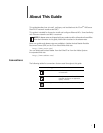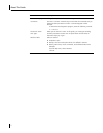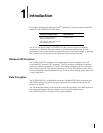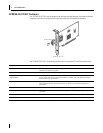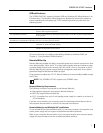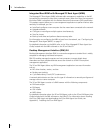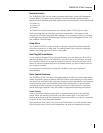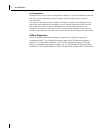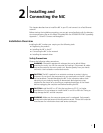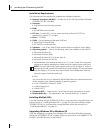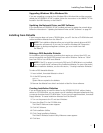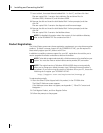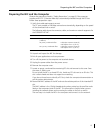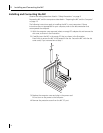
3CR990-FX-97 NIC Features
7
Remote Control
The 3CR990-FX-97 NIC can also receive commands via Remote Control and Management
Protocol (RMCP). This feature is also specified in the ASF specification and lets network
administrators troubleshoot and resolve system issues across the network. Commands include:
■ Power on
■ Power off
■ Reboot
■ Reboot from an alternative device (for example: MBA, CD-ROM, and so forth)
Both monitoring alerts and sending commands are available in the system console
through the 3Com Remote System Alert Manager. This management plug-in is available
for HP OpenView Network Node Manager, Microsoft Systems Management Server, and
Intel LANDesk Client Manager.
Keep-Alive
The 3CR990-FX-97 NIC can also transmit a workgroup keep-alive packet periodically
while the computer is in a sleep state. This packet prevents the computer workstation
address from being aged-out of switch router tables.
Hot Plug NIC Installation
If your computer supports PCI hot plug specifications, you can add a new 3Com NIC or
remove and replace a 3Com NIC without turning off power to the computer. Hot plug
NIC installation allows you to expand connections without taking the computer out of
service. It makes troubleshooting faster and easier because you do not need to wait for
the computer to reboot.
For instructions on performing a hot plug NIC installation, refer to your computer
documentation.
Flow Control Features
The 3CR990-FX-97 NIC uses flow control technology to throttle the incoming data packet
stream and prevent the loss of packets. IEEE 803.2x flow control prevents the input buffers
of a device from overflowing. By using pause frames to communicate buffer status between
linked transmitting and receiving devices (transmitters and receivers). A receiver sends a
pause frame to tell a transmitter to stop the transmission of data frames for a specified
period, allowing the receiver’s input port buffers to empty before receiving new packets.
Pause Frames
When a transmitter receives pause frames, it suspends transmission for the specified
period. When the receiver’s input buffers can store packets again, it can either send
another pause frame to tell the transmitter to resume transmission, or wait for transmission
to resume at the end of the specified period.
With asymmetric flow control, only one of two linked devices can receive pause frames.
With symmetric flow control, both linked devices can send and receive pause frames.





